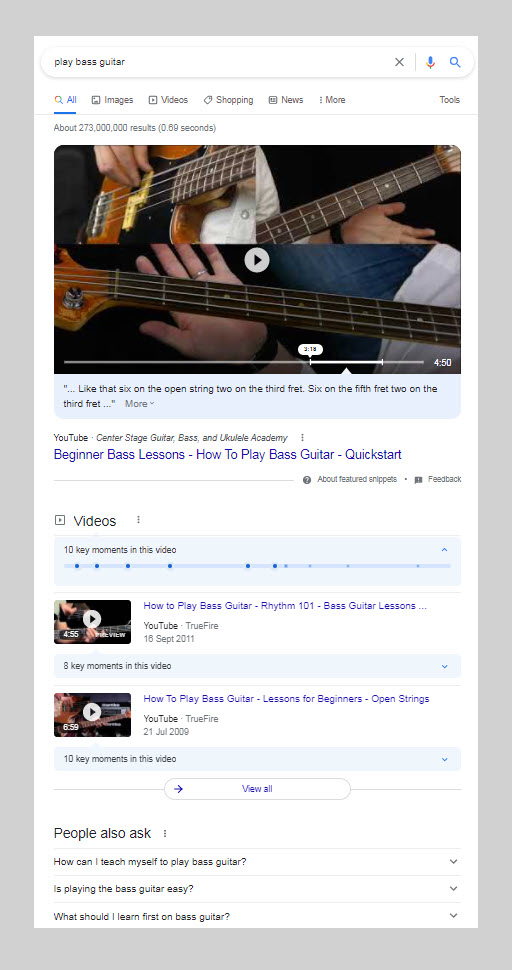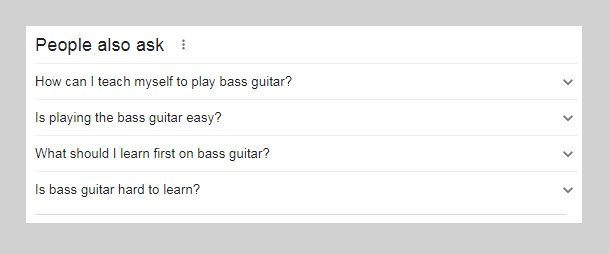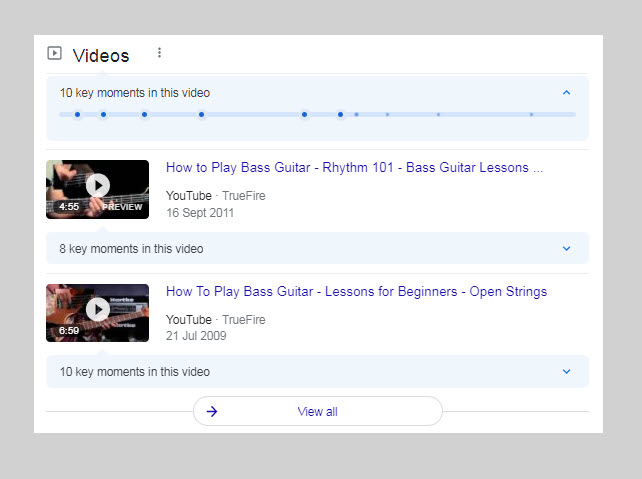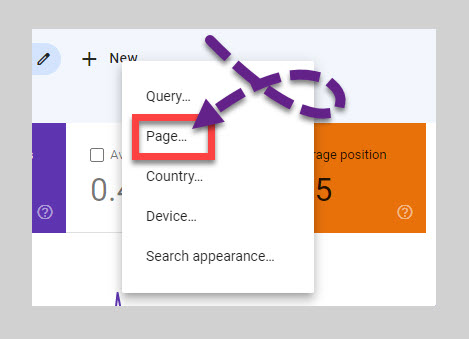Posted by
Darrell Mordecai
Semantic SEO is the most exciting area in SEO.
There is no doubt that it’s the future of SEO and that means no matter what area of SEO you are in, it pays to spend time learning semantic SEO strategies. One of the main SEO goals is to achieve topical relevance by creating a thorough network of content about your main topic.
But…
Just writing a lot of content is not likely to bring your site traffic. There is another piece of the puzzle.
Content clustering.
In this post, I’ll cover:
What content clusters are and I’ll show you two opposite approaches to creating cluster content.
What Are Content Clusters?
Content clustering is an SEO content strategy that is designed to position you as an authority for a specific topic or group of topics. Content clustering can improve your website architecture by siloing your site’s content into topics. This means all the content such as service pages, category pages, and blog content related to a single topic is clustered together in a topic-sub-topic hierarchy. This is achieved by creating internal links between content within a single topic.
It’s important to understand that SEO strategy has evolved past the traditional approach to keyword research. Don’t get me wrong, keyword targeting is still an important step in your on-page SEO. But, your content marketing strategy should be to make your site an authority in your niche, and thorough well-linked topic clusters signal to Google and other search engines that your site is authoritative in that topic. And when Google considers your site an authority in a topic, you’ll find it relatively easy to boost your search rankings.
This means you should aim to create a complete network of content that covers each topic thoroughly. But, just having a large number of blog posts on your site isn’t enough. You must cluster each topic together by creating an internal link structure between related content.
Benefits of Content Clustering
There are multiple marketing and SEO benefits to creating topic cluster content. Here are two benefits that every SEO should understand.
Topic clustering:
- Helps establish your site as an authority
- Helps your target audience find what they are looking for
1. Builds Authority
In order for your site to be an authority that search engines rely on, you must create thorough content clusters that cover the length and breadth of a topic. The better you do that the greater the likelihood that search engines will view your site as an authoritative and trustworthy source of information on the topic.
What’s more, it’s clear that Google uses backlinks as an authority signal. The problem is it’s next to impossible to build inbound links to bottom-of-the-funnel sales and service pages. And, if you want to make sales, it’s crucial to improve the search rankings of these pages. This can be neatly solved by creating content clusters that cover the general topic of your service pages and feature internal links that point to your service pages.
In other words, you are much more likely to earn inbound links to top-of-the-funnel informational pages. But, by clustering your top-of-the-funnel blog posts with your service pages by internally linking them, the service pages will get a nice tangible SEO boost.
2. Improves User Experience
As the internet becomes saturated with content, user experience becomes more and more important. That means, if your target audience can’t find the information they are looking for, they are likely to bounce in search of a site that is easy to navigate. This means getting the user experience right is crucial in today’s crowded content marketing world.
Content clusters can help your users find what they are looking for by keeping all similar content in one place or at least by creating relevant internal links between your web pages.
Now that you understand what it is and how it benefits your business…
Why do content clusters work?
How Content Clusters Help Your SEO
In order to understand how content clusters work, you need to understand beyond what the benefits are. Let’s examine why siloing your content makes a difference to search engines.
In previous blog posts, I’ve covered that Google is a semantic search engine which means Google attempts to decipher human language. In order to understand human language, Google keeps a database of known entities called a Knowledge Graph.
The Knowledge Graph doesn’t just include a list of known entities. It also includes how entities are related to one another. Each entity is called a node and each relationship is called an edge.
Now, it’s interesting to note that Google views your website in a similar way. When crawling your pages, Google sees your pages as nodes and the internal links between them as edges. This means that links between your pages signal to Google that these pages have a contextual relationship.
That means internal links do more than get ‘link juice’ flowing around your site.
Internal links are a way to show connections between your content. This makes clustering like content together crucial to how Google understands your site as a whole.
Now that we’ve touched on some of the basics, let’s get into how to create content clusters effectively.
Two Content Cluster Strategies
In general, there are two approaches to content clustering and as an SEO it pays to use a combination of both.
You can use:
- A top-down approach
- A bottom-up approach
Both approaches should produce the same results. The only difference is how you get there…
Content Clustering Example 1: A Top-Down Approach
Whenever you start a new SEO project it really pays to start with a topical map. A topical map will let you know what resources to create and will help you to cluster related entities together in a way that makes sense.
If you are not sure what related entities are, check out Related Entities vs Related Queries in Semantic SEO.
Although I have covered topical maps for SEO in a previous post, I’ll give you a brief overview here. The key to creating a topical map is to try to figure out how search engines arrange entities into topical hierarchies. This means finding how the search engine arranges topics and sub-topics into a hierarchy.
This is not always so easy to do because there is often very little information to work with. That said, here is an example.
Simply type your main topic into Google and take a look at what comes up. When you do this, start broad. In other words, don’t use very specific queries. If you do, you’ll limit the information that you find.
So, for example, let’s imagine you have an online school that teaches aspiring musicians to play the bass guitar.
Start your topical map research by typing the broad term ‘play bass guitar’ into Google. By doing that you’ll quickly see how Google understands the overall topic in general.
In the screenshot below you’ll see what comes up when I search the broad topic.

In my analysis, since there is no knowledge panel, this is likely to be part of a bigger topic. If you were to type ‘bass guitar’ into Google, you will see a Knowledge Panel. Without a Knowledge Panel, you might find it difficult to figure out how to structure your content.
Now ideally, for our learn-to-play-bass-guitar website, I’d suggest that our topic cluster should be focused on the term ‘play bass guitar’ instead of ‘bass guitar’ which would be too broad.
Okay, so what do you do now?
Gathering Google SERP Information
What I try to do when creating a topical map is to see if there are any broad topics that I can break down into sub-topics.
Usually, the People Also Ask box is a great resource.

Now looking at the People Also Ask queries, one that stands out to me is ‘what should I learn first on bass guitar?’. I could easily imagine that as a subtopic within the overall topic of ‘learn bass guitar’.
Perhaps you could break this subtopic down further. In other words, you could create a series of best songs for beginners.
Your site architecture could look like this:
domain.com/beginner-songs/smells-like-teen-spirit
domain.com/beginner-songs/la-grange
Once you’ve figured this subtopic out, try to find the next subtopic.
Perhaps the query ‘Is playing bass guitar easy?’ could fit into a subtopic that could be broken down further. Perhaps you could create a series of written blog posts that are designed to answer aspiring beginner bass guitarists’ frequently asked questions.
Using the People Also Ask box to find frequently asked questions is pretty easy.
Here are just a few:
- How can I teach myself bass guitar?
- Is playing the bass guitar easy?
- Do bassists play chords?
- Can a guitar player play bass?
In terms of site architecture, you could put all these posts under the general /blog/ folder. Or perhaps /faq/.
Also, if you look at the video content on the SERP you can see more clues to finding more subtopics.

As you can see there are short lessons breaking down the process of learning to play the bass guitar into short lessons focusing on different skills a bass player would need.
For instance:
This means you could create a sub-topic called Bass Guitar Basics. You could cluster the following topics together:
- Rhythm
- Tone
- Timing
- Technique
Now, I have to admit, I usually try to understand how search engines arrange the topic into hierarchies, but I am not seeing any evidence on the Google SERP. Instead, I’m finding topics and sub-topics and arranging them myself.
If you want to see an example of how I find topical hierarchies, check out my SEO topical research blog post.
Content Clustering Example 2: A Bottom-Up Approach
Now if you have a site that’s been around for a while, you can figure out what to cluster together based on on-site data. What’s more, if you take this approach, you are likely to find some big opportunities that can rank quickly.
The first step is to do a content audit.
Understand Your Site through a Content Audit
Before trying to build content clusters you need to first understand your site content.
The question you need to ask yourself is…
What is linking to what and why?
This might seem daunting at first, and I highly recommend mapping this out. The tool that I use to help me create a mind map is Dynalist.
When doing this, you might find some really obvious internal link opportunities. From personal experience, I’ve seen that this could potentially give your site an instant boost.
Once you’ve done that, I’d suggest looking for some bottom-up content cluster opportunities…
A Bottom-Up Content Cluster Strategy
Now you must be wondering what is a bottom-up approach to content clustering.
Your site might already be ranking for all kinds of keywords. Even keywords that are not adequately covered by your content. When this happens, you might have content that’s showing up on page three of the Google search results for some interesting long-tail keywords. If this is the case, you might easily rank on page one for these keywords by simply creating dedicated cluster pages that adequately satisfy the user intent.
Allow me to demonstrate…
To do this, simply go to Google Search Console and add a URL to the page filter.

Once you’ve isolated a piece of content that you want to rank, look at the queries report. Now, if the on-page SEO is well put together, you’ll see queries that in some way describe your content. So if your content is an eCommerce page for winter dresses, you should see winter dresses queries. (If you are not seeing relevant queries you have some work to do before trying to find cluster opportunities.)
Now, make sure that the table is presenting the maximum amount of rows.
Then scroll down and look through the queries.
At some point, you’ll see fewer and fewer clicks. Just keep scrolling. What you are looking for is a query that is not being satisfied by your content.
The key here is to find a query that has a distant or tangential relationship with your content. So back to the winter dresses example, you might find queries for summer dresses. Definitely, not a good fit for your winter dresses page but you could understand the tangential relationship.
What’s more, if you own an eCommerce shop that sells woman’s clothing, it would make perfect sense to create a summer dress cluster page.
This means it should fit neatly into your SEO sales funnel. Just make sure to check search volumes.
Now before I explain this further I want you to think about the following question…
Why Does Google Rank Your Content for Tangentially Related Keywords?
Answering this question will give you an insight into why creating content for these keywords makes sense. Now I can’t tell you that I absolutely know what the answer to this question is but, as SEOs we have curious minds that never stop looking for answers.
That said, this is what I think the answer to this question is.
Google is trying to bring the most relevant content as an answer to the search query. This means in all likelihood that content that’s ranking on the top pages of Google for the query are in some way relevant to the query. (At least according to Google.)
This means that Google singled your content out when someone made the search and according to Google your page is in some way relevant for the search. Now if your content is sitting at the bottom of page two on the search results page, Google might be telling you that if you want your content on page one you’d better improve its relevance. This could mean adding some content to make it compete with the top-performing pages.
If you can do this without it looking out of place, by all means, go ahead. If you do a good job you might get your content onto page one.
But…
This is not always possible without breaking the flow. And that’s where you can use a bottom-up content cluster strategy.
Build From the Bottom Up
So, let’s say you’ve decided that there is no way for your content to satisfy the user intent without a complete overhaul. At this point, you have two options.
Go ahead and overhaul it. However, overhauling content means you’ll be targeting a whole new set of keywords. This means it only makes sense if the content is not likely to get any organic traffic without the overhaul.
If on the other hand, it is likely to get organic traffic the way it is, don’t overhaul it. Instead, create a new cluster page that’s designed to answer the new search query.
Once you’ve done that, make sure to create internal links between the two pieces. When you do that you are signaling to Google and other search engines that these two pieces of content are related to each other. Also, make sure to use relevant anchor text.
One of my favorite benefits of this approach is that Google tells me what content to write next and what content to link together.
Content Clustering – Your Go-To SEO Strategy
By now you should have a pretty solid understanding of what content clustering is, how it could benefit your site and why it works.
You’ve also seen some approaches to get started creating your own content clusters.
Now, I have to point out, that with any SEO content marketing strategy, you’ll only ever figure it out completely by experimenting with it and tracking your results.
In other words, let this blog be a guide to get you started. The rest is up to you.
Discover how Rank Ranger can enhance your business
All the data in insights you need to dominate the SERPs

